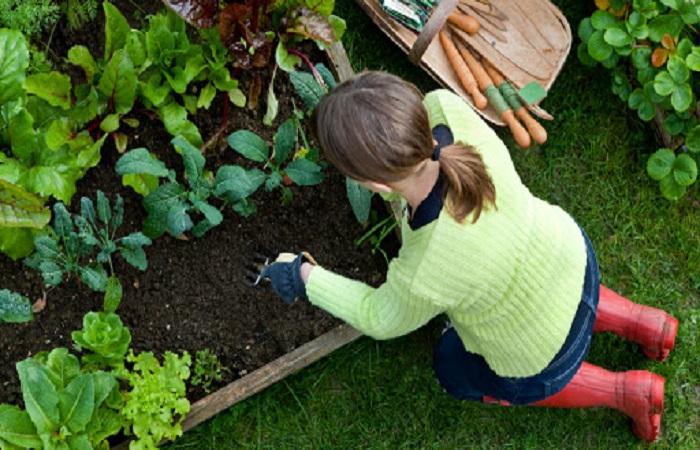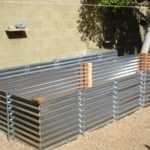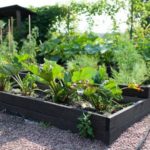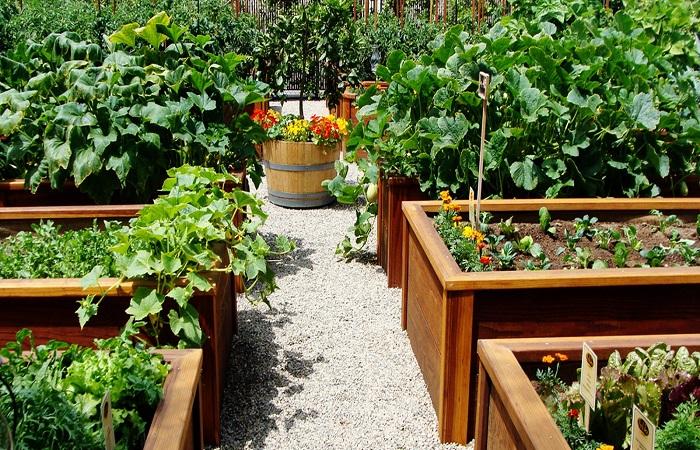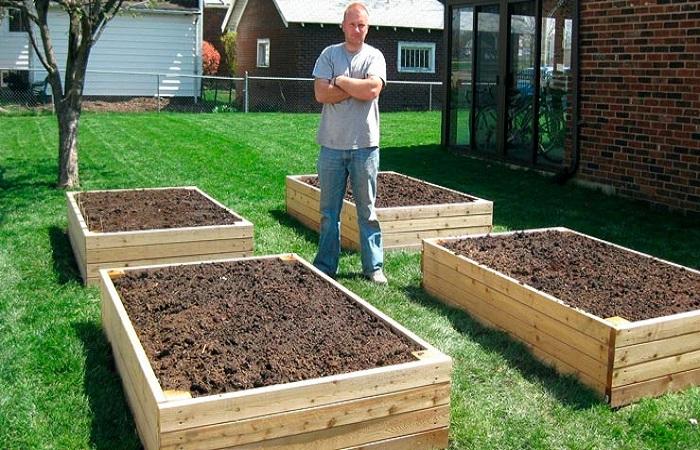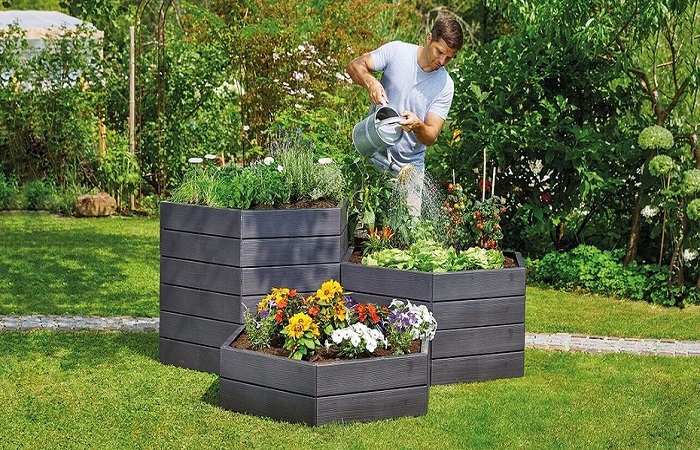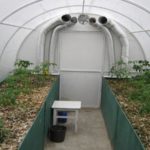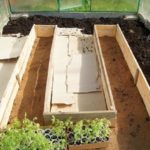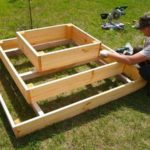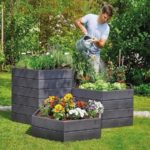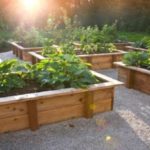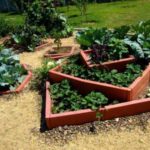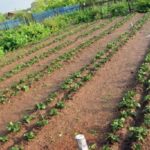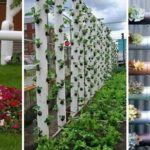Residents of the northern regions face difficulties when growing crops due to the harsh climate. In spring, the soil warms up quite late, and with the arrival of the first autumn days, a significant decrease in temperature is observed. In a short warm period, it helps to grow and harvest a rich harvest by arranging warm beds, which even a novice gardener can make, unlike greenhouses, where time and skills will be needed.
- Why do we need warm beds?
- Overview of species
- Features and Benefits
- DIY making
- Dimensions of a warm bed
- Site selection and preparation
- Do-it-yourself warm raised beds
- How to build combined warm beds
- How to properly make sunken warm beds
- Arranging warm beds in a greenhouse
- Warm beds in a greenhouse
- How to make warm beds from plastic bottles
- Application specifics
Why do we need warm beds?
A warm bed consists of several layers of organic waste, which, when heated, release energy to heat the soil. This method of growing plants allows, even in harsh climates, to start sowing seeds or planting seedlings a month earlier and, accordingly, have time to harvest before the onset of cold weather.
It is recommended to set up a warm bed in the fall, when there is enough organic matter on the site - fallen leaves, plant tops, branches. In this case, before the onset of the first spring days, the remains will rot and begin to generate heat. They are laid to a depth of 50 cm and covered with black plastic film on top to speed up the decomposition process. In the spring, after planting seedlings, organic matter will begin to release heat and warm the root system of young seedlings. In addition, in such beds, crops are not afraid of return frosts, cold morning dew and temperature changes during the day.
The advantages because of which gardeners set up warm beds on their plots:
- the possibility of early sowing of seeds and planting of seedlings;
- no need for digging;
- increasing crop yields;
- the ability to grow heat-loving plants even in regions with cold climates;
- full development of crops even in unstable weather with a large number of cool days during the season;
- reducing the need of plants for fertilizers, since decomposed organic matter itself nourishes the soil;
- increasing the resistance of crops to the effects of pathogens without the use of chemicals;
- extension of the fruiting period.
Overview of species
Beds using organic layers are divided into two types:
- In-depth. In this case, for the arrangement, the top turf layer is removed and a trench is dug for planting. Several layers of organic matter are placed at the bottom, and fertile soil is poured on top. This option is used mainly by owners of areas where there is a lack of moisture, and it must be preserved for the full development of plants.
- Elevated. To create such ridges, a box is constructed in which the soil is located above ground level. This method of growing crops is used in those areas where there is a threat of flooding of the area with melt water and rain, as well as when groundwater is shallow.
The main types of beds are made in different shapes and are also insulated using stretched polyethylene film.
Features and Benefits
Gardeners who have made insulated beds on their plots have identified a number of advantages of such plant growing:
- Availability of drainage. Organic materials used for layering are characterized by their ability to retain moisture and protect the roots of planted plants from excessive exposure to moisture or drought. This function of warm beds is especially relevant in those areas where groundwater is located close to the soil surface.
- Rapid heating of the contents of the bed.Due to the fact that the layers are created from both small and large organic residues, their decomposition occurs slowly, as a result of which the earth warms up evenly and supplies the roots of crops with a sufficient amount of heat.
- Lack of weeds. Thanks to the high sides, weed seeds and creeping weeds do not fall into such a bed.
- Space saving. Proper placement of plants in high beds allows you to free up free space on the site, which can be used to create recreation areas.
- Easy to maintain and saves water. Crops planted on such ridges are much easier to care for than plants that are located in open space. In addition, thanks to this, the irrigation liquid does not go uselessly into the ground, but remains at the root system of the crops.
DIY making
Making a warm bed begins with determining the optimal size of the structure and preparing a place for it.
Dimensions of a warm bed
As for the length of the ridge, it can be any; this parameter depends on the size of the plot and the availability of free space on it. This parameter varies from 1 to 3 meters. The width is selected so that it is convenient to care for the plants from different sides. It is not recommended to place more than 2 rows of crops on a high bed, otherwise you will have to stretch a lot when watering or loosening the soil. When choosing the height of the box, they are guided by dimensions from 30 to 80 cm; if the gardener does not want to bend over too much when caring for crops, then you can make the sides higher. It is worth deciding on the size before the onset of spring.
Site selection and preparation
The area for the location of the beds is carefully selected, because the effectiveness of the created structure directly depends on this stage. The site should be illuminated by the sun throughout the day; a place in partial shade is also suitable if you plan to plant plants that do not need a lot of sunlight. The structure is positioned in such a way that it is convenient to approach it from any side.
At the selected location, remove the top part of the soil with grass, level the surface and remove all debris, weed roots and small stones. This is necessary to ensure that the structure stands level and does not warp.
Do-it-yourself warm raised beds
To make a box for vegetables, you need to prepare boards or other material of the planned size and pegs that will serve as legs. Before use, wood should be impregnated with a water-repellent composition so that it does not become unusable after a year of use.
At the end of summer or beginning of autumn, the completed structure is installed on the prepared area and they begin to fill it in layers.
The more layers you get, the warmer the bed will be:
- Thin branches that remain after pruning the trees are placed at the very bottom; it is important that there are no signs of disease on them.
- The second layer is plant stems and shredded paper.
- Next comes sawdust and food waste.
- Then lay out the grass cut from the area and leaf litter.
- At the very top there is humus and compost.
It is advisable to shed each layer with water, since in a dry state organic matter slowly decomposes.
How to build combined warm beds
To create a combined version, the bottom layer is buried and a box is installed on top of it.
How to properly make sunken warm beds
To arrange sunken beds, dig a trench corresponding in length to the dimensions of the future structure, at least 2 shovels long. Small strong branches are laid across the bottom; they will keep the internal space from shifting. Standard layers of organic matter are laid on this material.
Arranging warm beds in a greenhouse
If the greenhouse is heated, then pipes can be installed under the bottom through which warm water circulates. In this case, plants can be grown throughout the year. Since there is high humidity in the greenhouse, it is better to use slate or brick as sides; the wood will quickly collapse.
Warm beds in a greenhouse
If the gardener wants to harvest the first harvest early, then install arcs on the box and stretch the film, periodically removing it for ventilation.
How to make warm beds from plastic bottles
Such beds are used in regions where spring comes late and there is a risk of freezing of the plant root system. A metal mesh is laid at the bottom of the dug trench, and plastic bottles with screwed caps are placed on it in rows; the sides of the trench are lined with sheets of thick cardboard.
Application specifics
To speed up the process of overheating of organic matter in winter, it is recommended to place black covering material on the top of the bed.With the arrival of spring, such structures are used for early sowing of seeds and planting seedlings, as well as for growing heat-loving plants.

